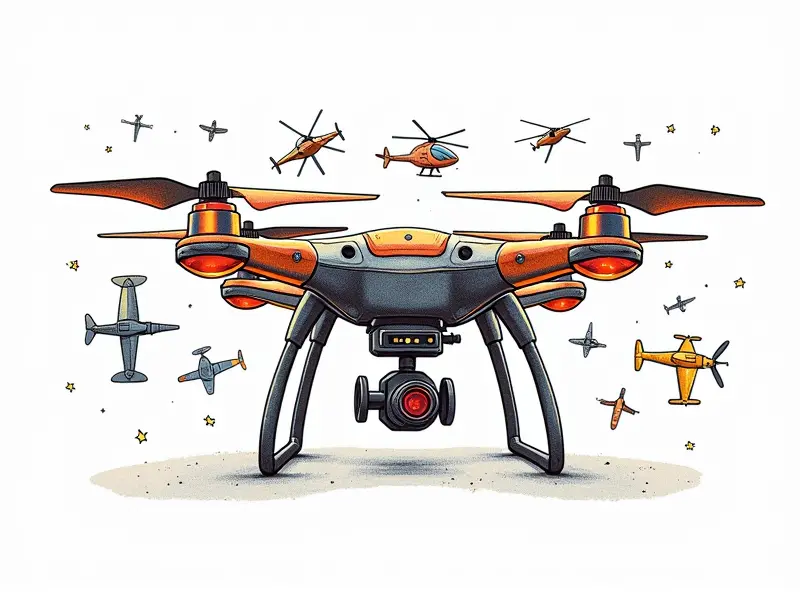Applications of BLDC motors?

Applications of BLDC Motors in RC Models
In the world of remote-controlled (RC) models, advancements in motor technology have been pivotal in enhancing performance and reliability. Among these innovations, Brushless Direct Current (BLDC) motors stand out as a game changer due to their superior efficiency, power density, and durability. This article delves into the various applications of BLDC motors across different RC platforms, highlighting why they are essential for modern RC enthusiasts.
Why BLDC Motors Are a Game Changer in RC
The transition from brushed DC motors to BLDC motors represents a significant leap forward in RC technology. Unlike their predecessors, BLDC motors do not suffer from the wear and tear associated with brushes and commutators, making them more reliable over long periods of use. This reliability is crucial for RC pilots who demand consistent performance during extended flights or high-intensity racing sessions.
How BLDC Motors Power RC Quadcopters
BLDC motors are particularly well-suited for powering the propellers of quadcopters due to their ability to deliver high torque at low speeds. This characteristic is essential for maintaining stability and responsiveness, especially during takeoff and landing operations. The precision control offered by BLDC motors also enables quadcopter pilots to perform intricate maneuvers with ease.
Boosting Speed and Agility with BLDC Motors
The high power-to-weight ratio of BLDC motors allows RC models to achieve faster speeds and greater agility compared to brushed motor counterparts. This advantage is particularly evident in racing scenarios where quick acceleration and rapid directional changes are critical for success.
Enhancing RC Airplane Efficiency with BLDC
BLDC motors contribute significantly to the efficiency of RC airplanes by reducing energy consumption while maintaining high thrust levels. The absence of brushes means less friction, leading to better heat management and longer operational times without performance degradation.
The Role of BLDC in FPV Racing Drones
In the competitive world of First-Person View (FPV) racing drones, every millisecond counts. BLDC motors provide the necessary edge through their ability to deliver peak power instantly, enabling pilots to navigate tight courses with unmatched precision and speed.
BLDC Motors for Precision in RC Models
The precise control offered by BLDC motors is a key factor in achieving high levels of accuracy in various RC applications. Whether it's maintaining steady flight paths or executing complex aerobatics, the smooth operation of these motors ensures that every command from the pilot is executed flawlessly.
BLDC: The Engine Behind Modern RC Aircraft
The integration of BLDC motors into modern RC aircraft designs has revolutionized the way these models are built and flown. These motors not only enhance performance but also enable innovative features such as autonomous flight modes, which rely on consistent power delivery to function effectively.
Why BLDC Motors Are Essential for RC Pilots
The benefits of using BLDC motors extend beyond mere performance enhancements; they are crucial for the longevity and reliability of RC models. By reducing maintenance needs and extending operational life, these motors allow pilots to focus on honing their skills rather than dealing with mechanical issues.
Advantages of BLDC Motors in Drone Racing
The advantages of BLDC motors become particularly evident in competitive drone racing environments where the difference between victory and defeat can be a matter of milliseconds. Their ability to provide instant power, coupled with minimal maintenance requirements, makes them indispensable for serious racers.
Efficiency of BLDC Motors in RC Helicopters
In the realm of RC helicopters, BLDC motors offer unparalleled benefits such as improved throttle response and reduced noise levels. These features contribute to a more enjoyable flying experience while also enhancing overall performance and maneuverability.
Conclusion
The adoption of BLDC motors in various RC platforms has ushered in a new era of performance, efficiency, and reliability for remote-controlled models. From powering the propellers of quadcopters to driving the engines of high-speed racing drones, these advanced motors continue to push the boundaries of what is possible in the world of RC technology.

